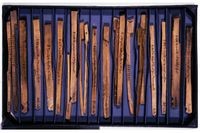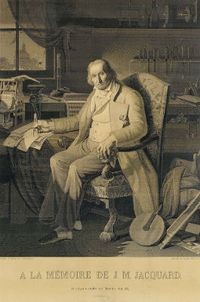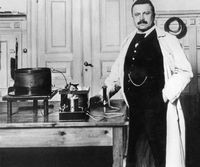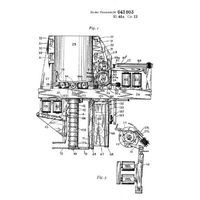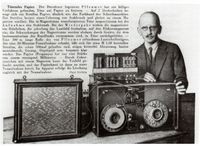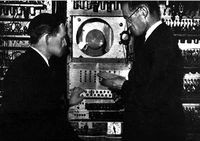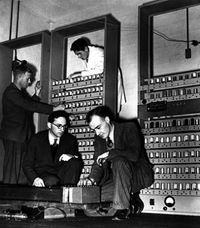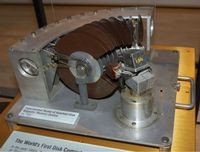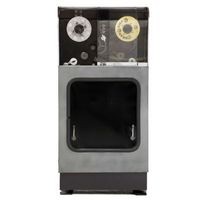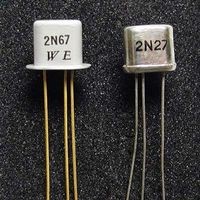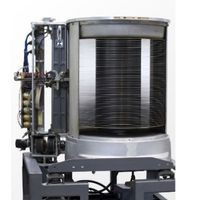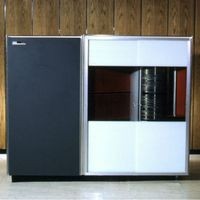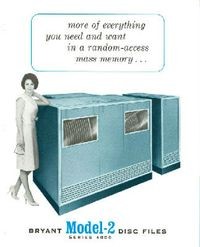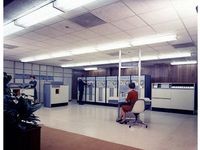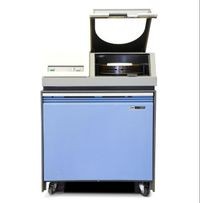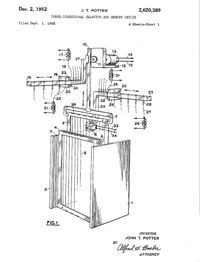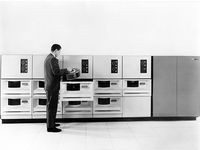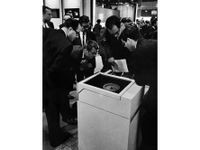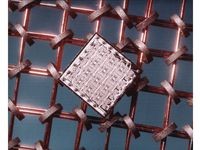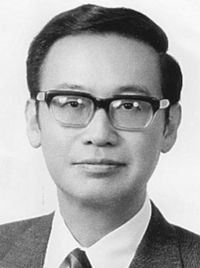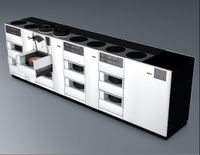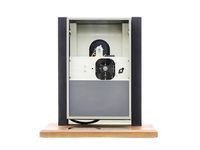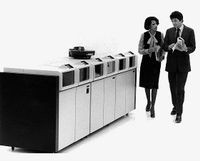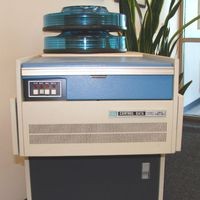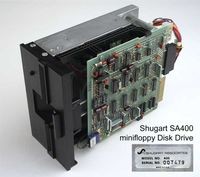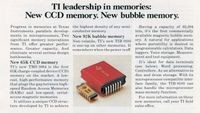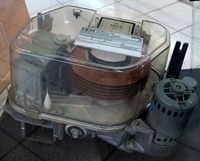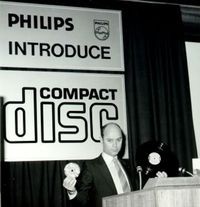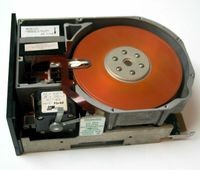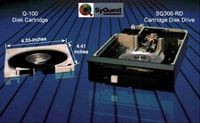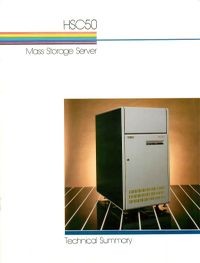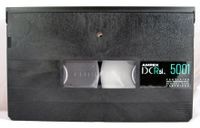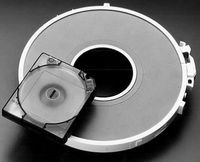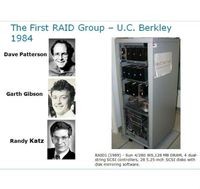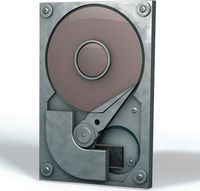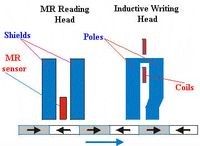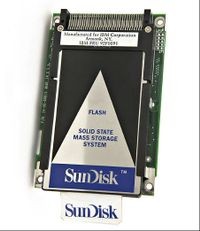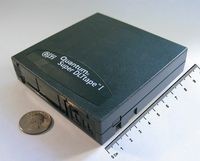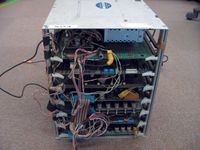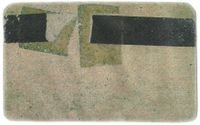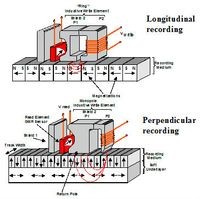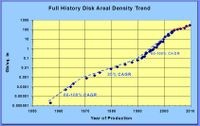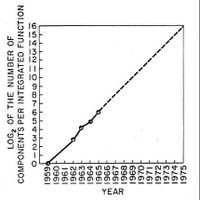Pre-1950s
Roman philosopher Pliny describes tally sticks
Numerical information recorded by notches carved in bone and wood
Tiwanaku pottery depicts quipu storage device
Record keeping system used by the Incas is more than 4,000 years old
Punched cards control Jacquard loom
Joseph Jacquard’s punched cards program patterns on a weaving loom
Faraday describes electro-magnetic induction
Michael Faraday discovers two fundamental components of magnetic storage
Poulsen records voice on magnetic wire
Valdemar Poulsen records Emperor Franz Josef of Austria at Paris exhibition
Tauschek patents magnetic drum storage
Gustav Tauschek patents cylinder coated with ferromagnetic material
Audio recorder uses low-cost magnetic tape
AEG debuts the Magnetophon commercial audio tape recorder in Berlin
Williams demonstrates CRT storage
Cathode Ray Tube electrostatic effect enables random access memory
EDSAC computer employs delay-line storage
Mercury-filled delay line provides memory for first stored-program computer
1950s
Rabinow patents magnetic disk data storage
NBS researcher‘s notched disk memory informs the RAMAC design
Tape unit developed for data storage
Univac introduces magnetic tape media data storage machine
Storage subsystems emerge
Data processing systems integrate multiple forms of input and output
Transistors make fast memories
Solid-state devices improve speed, size & reliability of memory systems
Whirlwind computer debuts core memory
Magnetic cores provide a fast, reliable solution for computer main memory
Rotary-head delivers high-quality video
Quadruplex recorders serve as professional video standard for 25 years
First commercial hard disk drive shipped
Model 350 RAMAC unit stored the equivalent of 3.75 megabytes of data on 50 large disks
1960s
Flying heads improve HDD capacity & speed
Commercial success of the "slider" in the IBM 1301 established a model for the industry
HDD competitors enter the market
Bryant Computer Products introduces units storing up to 205 MB
Thin-film memory commercially available
Univac 1107 Thin-Film Memory computer announced
Disk packs offer portability & security
Interchangable packs spawn Plug Compatible Manufacturers (PCM)
Bulk storage systems add low-cost capacity
NCR CRAM was the “first commercially significant Bulk Storage Subsystem”
Semiconductor Read-Only-Memory arrays
Fixed semiconductor ROMs offer high density and low cost per bit
First cartridge HDD and voice coil actuator
IBM 2310 Ramkit pioneered HDD technology in small computer applications
Ferrite heads improve HDD speed & density
Recording density advances permit economical massive online storage
Magneto-Optical storage demonstrated
Magneto-Optical capacity outstripped magnetic disks in the 1980s
Memorex Introduces an IBM compatible HDD
Plug-compatible (PCM) disk-drive manufacturers proliferate
1970s
Semiconductors compete with magnetic cores
Intel DRAM is the first significant semiconductor challenge to core memory
Reusable semiconductor ROM introduced
User-erasable, programmable ROMs support microprocessor system design
Track-following servo quadruples HDD density
IBM 3330 incorporated important hardware and software advances
Floppy disk loads mainframe computer data
Small, removable flexible disks replace punched cards and paper tape
Optical Laser Disc Player is demonstrated
MCA and Philips develop laser technology for distributing consumer movies
"Winchester" pioneers key HDD technology
IBM 3340 employs new low-cost, low-load, landing read/write heads
CDC disk drive departs from IBM standards
First significant departure from the IBM HDD technology & media path
Minicomputers stimulate floppy disk sales
5.25 and 3.5-inch drives and media meet personal computer needs
Standards Accelerate Disk Drive Integration
Disk drive interfaces either become a standard or fail in the marketplace
Bubbles, CCDs & other forgotten memories
Experimental technologies that have been tried, tested and found wanting
Consortia pursue storage R&D projects
Academic, government & industry research consortia established
Thin-film heads introduced for large disks
Photolithography enables a new generation of high-density disk drives
Hard disk diameter shrinks to eight inches
Small business computers require smaller physical size HDDs
Philips demonstrates digital compact disc
CD-ROM emerges for software & video game distribution
1980s
Seagate 5.25-inch HDD becomes PC standard
Personal computer boosts HDD output to new levels of production
Film media increases disk storage density
Carbon coating enhances reliability of magnetic film media
Networked Storage Systems commercialized
VAXcluster allows sharing across a pool of block-level storage
Digital Signal Processing Increases Hardware Areal Density
PRML techniques enhance magnetic media storage capacity
Tape cartridge improves ease of use
Magnetoresistive head & new media increase speed and density
U.C. Berkeley paper catalyses interest in RAID
Redundant Arrays of Independent Disks outperform mainframe drives
Miniature disk drives enable mobile computing
2.5” and smaller HDDs serve portable needs from notebooks to music players
1990s
Magnetoresistive read-head HDD introduced
MR, GMR & TMR heads deliver successive increases in storage density
Solid State Drive module demonstrated
Flash non-volatile memory developed for mass storage systems
Consumer CD-R drive priced below $1000
Recordable CDs replace magnetic floppy disks for portable storage
HDD shipments exceed 100 million units/year
One of the world's fastest growing industries through 1996
Tape storage thrives in archival applications
HP, IBM, and Seagate form Linear Tape-Open (LTO) consortium
2000s
Prototype blue laser disc stores HD video
Blue diode invention earns Japanese physicists Nobel Prize in Physics
Portable Personal Storage Devices
USB Flash “sticks” displace disks for portable computer data storage
Perpendicular Magnetic Recording arrives
PMR raises disk drive areal density above 100 gigabits per square inch
Storage in the cloud
Amazon announces remote access to low cost bulk storage
2010s
Helium Drives Cloud Storage
Helium technology allows much more of your precious data to be stored cheaply in the “cloud”
HDD areal density reaches 1 terabit/sq. in.
New technologies promise densities up to 10 terabits per square inch
Moore’s “Law” prevails for 50 years
Projection drove advances in semiconductor and magnetic storage



